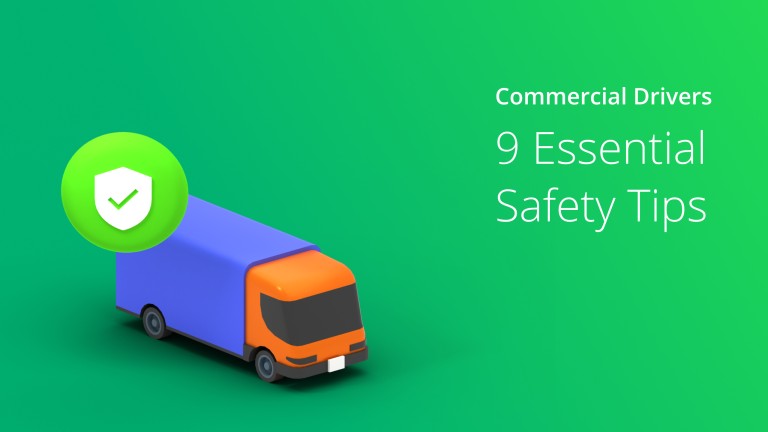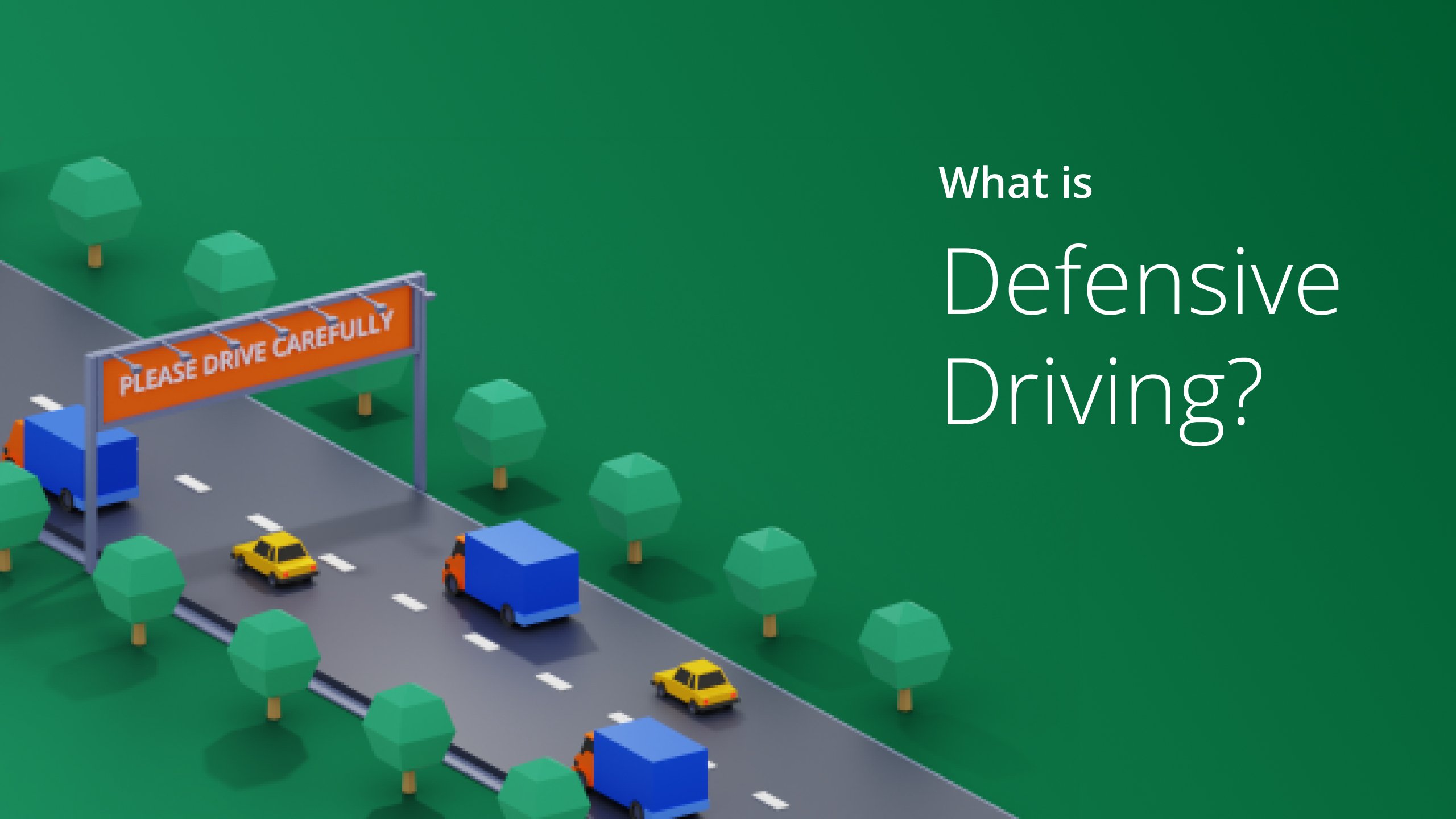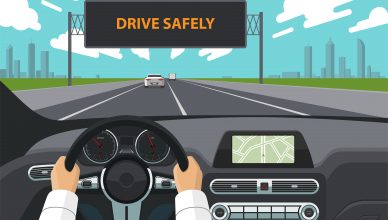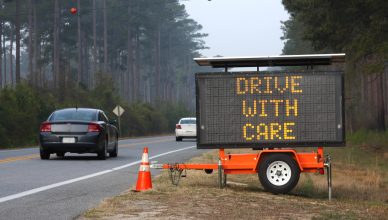Trucking is one of the most dangerous occupations in America, with a fatality rate of 25.8 per 100,000 workers. For perspective, that’s a more significant number than underground mining machine workers and only slightly less than roofers and construction workers—two seemingly more dangerous professions.
Commercial truckers risk their health and safety every time they hit the road. And out of the 843 reported trucker deaths reported by the latest data from the Bureau of Labor
Statistics, a considerable percentage were the result of highway crashes.
But as one of the biggest route optimization software providers in the game, we know a thing or two about helping truckers minimize their risk on the road. That’s why we’ve put together a list of 8 essential safety tips for commercial truckers.
Truck Route Navigation App

Safety Tips for Commercial Truck Drivers
Let’s take a quick look at some of the best ways truckers can stay safe while driving:
Table of Contents
By following these safety tips, commercial truck drivers can minimize road risk and help ensure they safely make it to their destination.
1. Understand Defensive Driving Best Practices
Although they teach you this in driver’s ed, it’s important to remember that defensive driving is always the best way to stay safe on the road. And as a commercial trucker, you should be especially cautious of other drivers who may not be as experienced (or attentive) as you are.
According to a study from AAA, aggressive drivers are involved in over 55% of fatal crashes. In addition to wearing your seat belt and taking basic safety precautions, you’ll need to drive defensively around other vehicles.
The most common aggressive or reckless driving habits that lead to accidents are:
- Careless and erratic behavior on the road
- Improper turns
- Tailgating
- Running stop signs or red lights
- Not observing the speed limit
- Making an improper pass
- Failing to yield the right of way
- Driving under the influence of drugs or alcohol
And behind the wheel of a commercial truck, you need to be extra vigilant of these aggressive driving behaviors. After all, you’re driving a much larger vehicle than most other drivers on the road—which means that an accident could have much more severe consequences.
Here are a few best practices to remember:
Keep an eye on your blind spots.
Your blind spots are the areas around your truck that you can’t see in your mirrors. It’s much larger than the blind spot of a passenger car, which is why it’s important to always check your blind spots before making lane changes.
Typically, the mirrors on commercial trucks are designed to give you a complete view of your surroundings. But you’ll need to thoroughly examine your surroundings before moving to another lane.
Want To See For Yourself How Route4Me Can Help Commercial Truck Drivers Stay Safe on the Road and Save Money?

Practice the three-second rule.
The three-second rule is a truck driving safety measure that states truck drivers should allow at least three seconds between the time the car in front of them reaches a particular spot on the road and when they reach it.
If severe weather conditions are present, drivers should increase the follow time. For example, if it is raining heavily or there are strong winds, the driver should maintain a following distance of five seconds.
And if the roads are icy, the driver should increase the following distance to 10 seconds.
Have a plan for emergencies.
Since they drive long distances, commercial truck drivers face unique challenges on the road. Unexpected driving conditions, like poor weather or breakdowns, can be uncomfortable and dangerous.
To lessen the impact of these emergencies, truck drivers keep items such as water, food, a first aid kit, and extra clothes and blankets in their cabs so they can wait for repairs comfortably if necessary.
Stay calm, no matter what.
Road rage caused 12,610 injuries over the past seven years, according to SafeMotorist. And since truck drivers operate much larger vehicles than other drivers on the road, they must keep their cool, even when other motorists act out.
If another driver cuts you off or drives erratically, don’t let it get to you. It’s not worth risking an accident (or getting a ticket) because you let your emotions get the best of you.
Always use your turn signal.
Sometimes, other drivers will be in one of your blind spots. Other times, they might be in your way by accident. And for truck drivers who complete deliveries outside peak traffic times (e.g., at night or early in the morning), moving over without signaling can seem harmless.
Especially if you are nearing an offramp and need to move over quickly, it’s critical to let drivers know your intentions. By doing so, you can avoid potential accidents—and other drivers can respond proactively.
When in doubt, brake early.
Truck drivers often carry heavy loads, making maintaining control in an emergency difficult. And since it takes large trucks longer to stop than passenger vehicles, truck drivers need to give themselves extra time to slow down.
If you’re approaching a stop sign or red light and there might be traffic, don’t wait until the last second to hit the brakes. Instead, maintain a safe braking distance to avoid trucking accidents.
The same necessary precautions apply to icy roads, work zones, uneven road surfaces, or changing road conditions. If you aren’t as prepared as you’d like, slow down so you have more time to react if something unexpected happens.
2. Don’t Drive Hammered (or turnt up)
Pulling up to work geeked out isn’t exactly the most professional way to get your job done. And apparently, a bunch of truckers are doing it. But as a commercial truck driver, you are held to a higher standard when it comes to drinking and driving. It is illegal for you to drive with a blood alcohol content (BAC) of .04% or higher, but it’s also against company policy for most trucking companies.Drivers aren’t even allowed to have alcohol in their cab while on the road. If you’re caught driving under the influence or with any trace of alcohol in your system, you could face jail time, lose your job, and damage your personal and professional reputation.
Plus, it’s a major threat to driver safety everywhere, accounting for about 30% of all traffic crash fatalities nationwide.
So don’t order a beer when you stop for lunch, and definitely, don’t keep swishas in your front seat, and definitely don’t get behind the wheel if you’ve been drinking.
3. Create a Schedule for Preventive Maintenance
The safety of those on the road begins with the upkeep of the vehicles themselves. Commercial motor vehicles that aren’t regularly maintained are more likely to have driving problems. Telematics devices offer an ongoing look at odometer and engine data, including any fault codes.
To manage a fleet of vehicles, you need to have a schedule for preventive maintenance. This includes:
- Creating an inspection schedule
- Checking driver reports
- Checking your vehicle’s conditions
- Maintaining tire conditions (optimal tread, air pressure, etc.)
- Performing regular oil changes
- Fuel management
Mechanists can use your telematics data to create an extensive preventative maintenance schedule that accounts for mileage, days since the last service, previous breakdown history, and more.
They can also get real-time alerts for urgent fault codes. You can avoid unnecessary vehicle breakdowns by staying on top of regular upkeep and performing proactive repairs.
4. Conduct Pre-Trip and Post-Trip Inspections
In addition to preventive maintenance, pre and post-trip inspections are essential for keeping commercial vehicles safe. These inspections help drivers identify potential vehicle problems before they hit the road (and they’re required by the DoT!).
Pre-trip inspections should be conducted at the beginning of each day or shift. They allow drivers to check fluid levels, tire pressure, and other aspects of their vehicle that could impact safety.
Post-trip inspections take place at the end of each day or shift. They’re an opportunity for drivers to document any new problems during their trip and ensure any previous issues have been addressed.
5. Use Tools that Help you Tespond to Changes in Road Conditions
Technology can help you stay up-to-date on changes in road conditions, weather, and traffic patterns. Especially if you’re a long-haul truck driver who covers multiple regions or states in a matter of days, you’ll want to take advantage of our commercial vehicle and truck routing software.
This software takes into account real-time data to help you avoid traffic jams, weather events, and other conditions that could impact your safety on the road.
In addition to helping you see potential hazards and areas of heavy traffic, this tool will help you plan your trip ahead of time and optimize your route for the most efficient (and safest) trip possible.
6. Use Real-Time GPS Tracking and Route Optimization to Plan the Safest Route
Using a route planner with GPS tracking is a game changer for any truck driver who wants to stay safe on the road. Not only does it help you avoid potential hazards, but you can also use it to plan the most efficient route for your trip.
A route planner like Route4Me considers weather conditions, height and weight limitations, traffic patterns, bridges, tunnels, and optimal routes for multi-stop trips—all things most motorists don’t need to worry about.
And when you know exactly where you are at all times, you can call a maintenance crew or tow truck in the event of an emergency.
GPS, maps & navigation apps have been shown to reduce driving time by up to 30% and reduce route planning time even more than that.
Multi-Stop Route Planner App

7. Take Breaks Often and Get Proper Rest
A significant number of trucking accidents occur as a result of driver fatigue. If you drive for long periods, it may be tough to remain alert, even if you feel well-rested.
HOS mandates that commercial motor vehicle (CMV) operators take breaks at specified intervals. For example, HOS truck driver limits state that CMV drivers must take a 30-minute break after eight hours of driving and then another 10-11 hour break before resuming their duties.
Aside from legally required breaks, it’s crucial to get enough rest. This also means taking extra breaks if you feel sleepy or impaired while driving. Although this may add time to your “On-Duty” period, it could significantly reduce the number of truck accidents caused by fatigue.
If you’re on the road and you feel yourself nodding off behind the steering wheel, find a place to pull over and park safely (e.g., at a rest stop that allows truck and bus drivers). Once you’re parked, you can take a short nap or just get out of the truck and walk around to wake yourself up.
8. Stay Aware of your Surroundings at All Times
When driving a large vehicle, it’s absolutely critical to remain alert. This means a few things:
- Don’t play music too loud. Although listening to music can help keep you awake, playing it too loud can limit your ability to hear horns, sirens, and other auditory cues that could indicate
- danger.
- Avoid distracted driving. Your text message or phone call can wait until you’re off duty. Pull over to a safe location first if you must use your phone.
- Don’t rely on automation. Even if your truck is equipped with sensors and other automated features, it’s still your responsibility to stay aware of your surroundings. This means being attentive to the road, other people, and pedestrians at all times.
- Use common sense. When driving, it’s always a good idea to err on the side of caution. If you’re ever unsure about a situation, it’s better to be safe than sorry.
- Exercise extra caution in high-risk scenarios. This includes changing lanes, seeing work zone signs, passing moving workers, and entering or exiting the highway.
Following these general rules of thumb can help you reduce injuries and save lives.
9. Use Dash Cams to Document any Accidents or Incidents
If you’re involved in an accident, evidence is essential to back up your side of the story. This is where a dash cam comes in handy.
A truck driver dash cam is a small camera that mounts on your dashboard (or windshield) and records everything that happens while driving. These devices are becoming
increasingly popular among commercial truckers, and for good reason.
Not only can a dashcam help you prove your innocence in the event of an accident, but it can also be used to document other incidents, like road rage or aggressive driving. Plus, some insurance companies offer discounts to truckers with dash cams installed in their vehicles.
Improve Truck Driving Safety With Route4Trucks
These truck driving tips are excellent starting points, but using a navigation device is a must if you want to be a safe and efficient commercial trucker.
For truck drivers and fleet managers, Route4Trucks helps save lives and reduce injuries on the road. Our route planning software considers HOS limits, weather conditions, height and weight limitations, and more to help you plan the safest route possible.
To learn more about how Route4Me can help you manage your commercial fleet, click here to contact our 24/7 support.
Want To See For Yourself How Route4Me Can Help Commercial Truck Drivers Stay Safe on the Road and Save Money?













